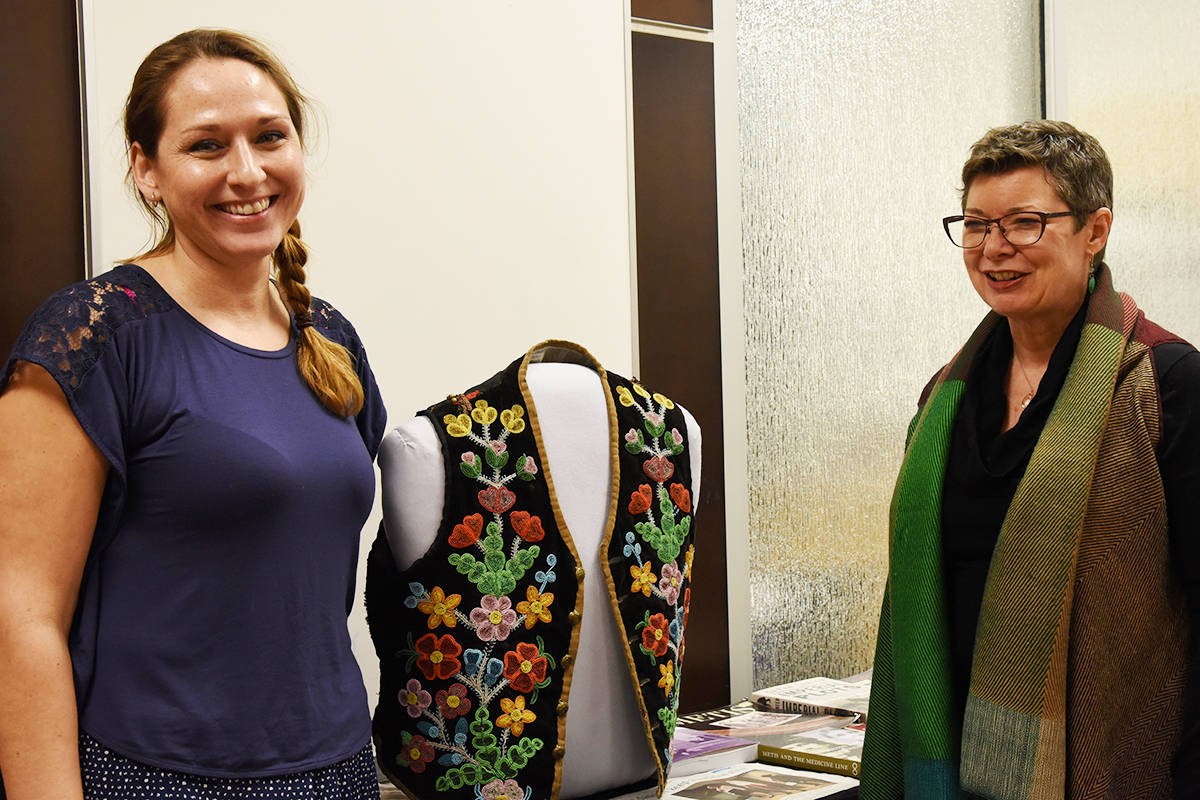The Red Deer Museum + Art Gallery (MAG) introduced their first ever Métis liaison, Carmen Houl, at a Métis community conversation event recently.
“We (the Métis) are a connecting-culture; bridge-builders,” Houl said.
The position was created to support the upcoming travelling exhibit ‘Hiding in Plain Sight’ coming from Library & Archives Canada (LAC) in December.
“We wanted someone who could facilitate community conversation, and collect local stories and artifacts to localize it,” said Lorna Johnson, MAG executive director.
“We know that the Métis story in this region was an important one, but there is very little historical information on record.”
The museum wanted a liaison to help connect local stories to a national exhibit they are bringing from Ottawa for the Alberta Winter Games – the aforementioned ‘Hiding in Plain Sight’.
The MAG is using the exhibit as an opportunity to start researching and documenting Métis stories from Central Alberta, collect original documents and artworks from Red Deer and area to display and present workshops on Métis culture and history to showcase Métis culture, arts and history for the Canada Winter Games.
As part of the Truth and Reconciliation Commission of Canada (TRC), LAC is addressing this gap by digitizing art, photographic documents and related materials to recognize Métis people and culture.
‘Hiding in Plain Sight’ was not initially intended to be a travelling exhibition. Johnson stumbled upon it by chance in the Métis newsletter and contacted the LAC to see if they could display it in Red Deer during Canada Winter Games.
“Carmen has the knowledge of Métis culture and experience designing presentations about Métis and indigenous cultures to the general public.
“And she is passionate about Métis culture,” Johnson said.
Prior to this post, Houl worked as an indigenous interpreter and liaison for Jasper National Park.
Meanwhile, engaging with the community may be one of the most challenging aspects of the position.
According to what members of the Alberta Métis Nation told Houl, there are up to 4,000 Métis people in the Red Deer area but only 15 of them voted in their recent elections.
“In the area around Red Deer there are a lot of ‘mainstream Métis’ hiding their identity and not practicing their culture for various reason,” Houl said.
She wants the exhibit to address this dysphoria—a state of feeling uneasy or dissatisfied and in conflict with one’s identity.
Houl also wants to include conversations about Métis women in the supporting exhibit. The LAC show only includes men.
“First nations women played a key role in the beginning of this country because they helped the settlers survive. All the explorers’ wives were Métis,” she said.
Johnson hopes that the exhibit will be a catalyst to encourage community members of Metis origin to share and document their stories so the Museum has a record of a more complete picture of Central Alberta history.
“Métis culture is lively and colorful and exciting – with the music, dance, and stories of the buffalo hunt,” said Johnson, “But we want to make sure that we tell the complete story which includes other aspects of life that are not so celebratory.”
Houl said she loves Red Deer and is happy to return to her roots – she grew up and went to school here and has relatives in the area. She has moved her family to Red Deer for this position.
“My focus in my career and passion in general is to practice and support my culture and art, so I’ve always had careers in that,” she said.



